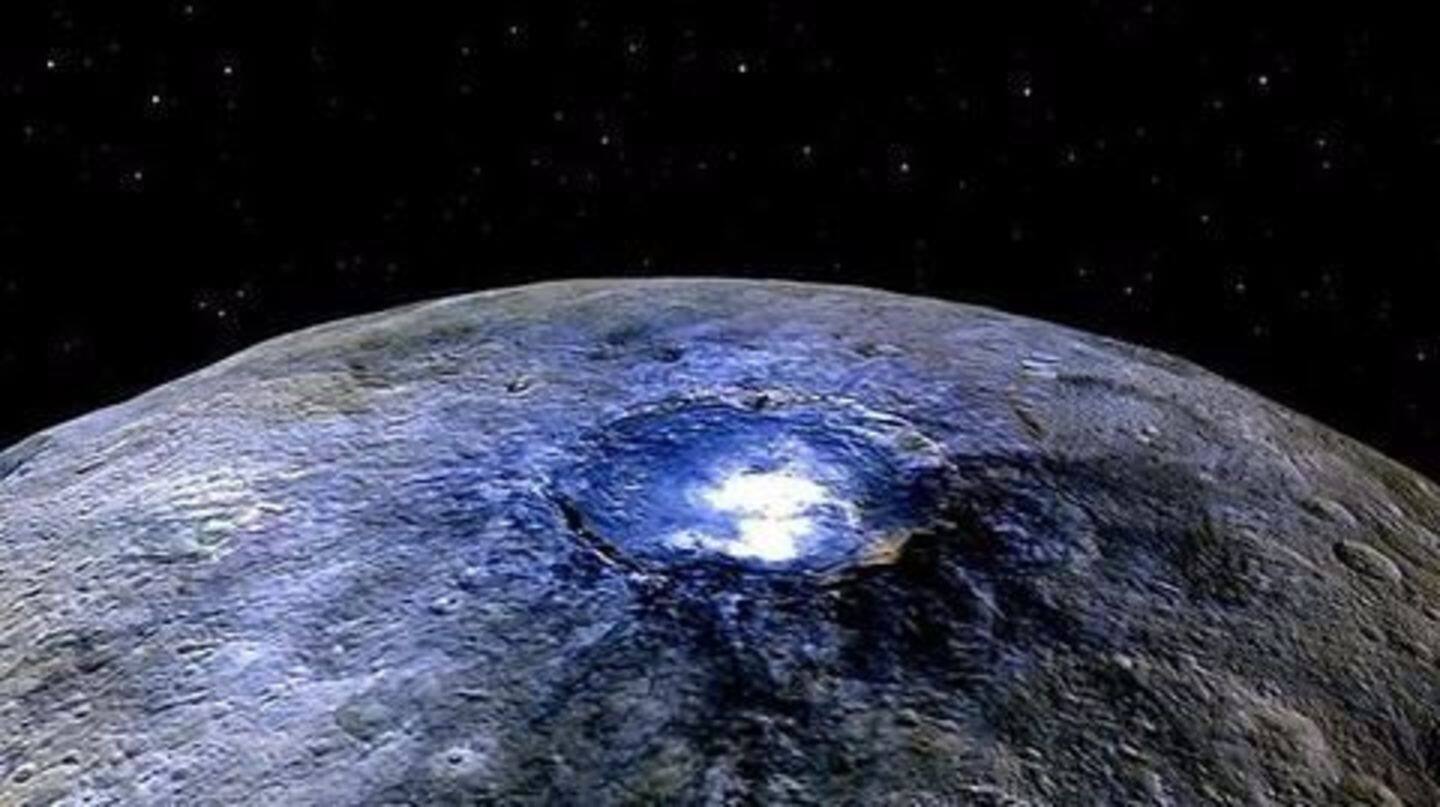
The building blocks of life found on dwarf planet Ceres
What's the story
In the latest development in the search for extraterrestrial life, researchers have detected organic materials on the surface of the dwarf planet Ceres, the largest object in the asteroid belt between Mars and Jupiter.
The organic materials were detected by the visible and infrared mapping spectrometer (VIR) aboard NASA's Dawn spacecraft which is currently orbiting Ceres.
What are the implications of the findings?
Quote
Ceres might have a favourable environment for prebiotic chemistry
"The combined presence on Ceres of ammonia-bearing hydrated minerals, water ice, carbonates, salts, and organic material indicates a very complex chemical environment, suggesting favorable environments to prebiotic chemistry," wrote the researchers in their paper which was published in the Science academic journal.
Organic materials
The nature of the organic materials
The organic compounds found on Ceres are concentrated in a 1,000 square km area, with the signature of organics being strongest on the floor of the 53-km-wide Ernutet Crater.
While scientists do not yet know the exact composition of the organic materials, they resemble the group that make up tar-like minerals on Earth.
Scientists say that the materials are most likely endogenous to Ceres.
Quote
Ceres might be moving towards more complex chemical processes
The simple organic compounds found on Ceres are "really pre-biological, but they're in the family of materials that we would expect if Ceres was working its way along the complexity path," said Christopher Russell, a UCLA planetary scientist and the main investigator of Dawn's data.
Life?
Could there be life on Ceres?
Previous studies on Ceres had found water ice, hydrated minerals, carbonates, and ammoniated clays, suggesting the presence of water and heat.
The discovery of the new compounds raises the possibility that such organics emerged from a warm, water-rich environment.
While there is still no conclusive evidence of a subsurface ocean, all of the above compounds, in the right environment, could theoretically lead to life.
Quote
Ceres joins the list of contenders for extraterrestrial life
"It [Ceres] joins Mars and several satellites of the giant planets in the list of locations in the solar system that may harbor life," said Michael Küppers, a planetary scientist at the European Space Agency, while Christopher Russell emphasized the "need to explore Ceres further".
Future studies
The next steps for Dawn
After nearly two years, Dawn is in a highly elliptical orbit around Ceres now.
On 23rd February, Dawn will move into a new orbit in a different orbital plane 20,000 km above Ceres, allowing it to study Ceres in a new geometry.
Perhaps more clues will be revealed in late spring when the sun will be directly behind Dawn, making Ceres appear brighter.